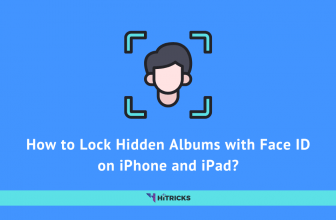Microsoft has associated with Amazon to act as an Android app store or app repository for Windows Subsystem for Android (WSA). However, Amazon’s Appstore catalog is extremely limited in comparison to Google Play Store in terms of the availability of Android apps. Sideloading allows you to set up or install Android apps from third-party websites or other sources. These sources can be official websites or unauthenticated websites which might be a threat to your Windows system. For security concerns, Android blocks the installation process of the Android apps which have been downloaded from unofficial sources or outside the Google Play Store. Luckily, Android comprises an optional feature to install the Android apps from obscure or unknown sources.
The best part about Windows Subsystem for Android (WSA) is that it allows you to install nearly all Android applications without changing the device settings. The process is quite similar to sideloading apps on your Smartphone, but you should be well-acquainted with Command Prompt. In this article, we’ll be going to discuss how to sideload Android apps on Windows Subsystem for Android on your PC system.
Here’s an overview:
- Before We Begin:
- How to Sideload Android Apps on Windows Subsystem for Android?
- Step 1: Installation of Windows Subsystem for Android feature in Windows 11
- Step 2: Enable the Virtual Machine Platform on Windows 11
- Step 3: Install the Android Debugging Bridge (ADB) tools:
- Step 4: Download the APK file of any Android app:
- Step 5: Sideload Android apps on Windows 11 Operating System:
- Last Words:
Before We Begin:
This article is for those who have already installed Windows Subsystem for Android on their Windows 11 supported Laptops and Desktops. In case you didn’t install it yet, don’t worry, we have already written step by step guides that you may follow:
- What is Windows Subsystem for Android (WSA)?
- How to enable Hyper-V Virtual Machine on Windows 11?
- Step by Step Guide: How to install Windows Subsystem for Android?
- How to Bypass the Amazon App Store Region Lock on Windows Subsystem for Android?
- How to Install Amazon Appstore on Windows Subsystem for Android?
- How to Install Android Apps on Windows Subsystem for Android with WSA PacMan?
After following all these guides you can proceed to sideload android apps, steps are given below.
How to Sideload Android Apps on Windows Subsystem for Android?
To successfully sideload Android apps into Windows 11, you’ll require some software components which include Windows Subsystem for Android, Android Debug Bridge (ADB) setup, an APK file of any Android app which you want to install on your PC system.
Step 1: Installation of Windows Subsystem for Android feature in Windows 11
- Firstly, click here which will redirect you to the online link generator for Microsoft Store.
- Now, on the first drop-down menu, click on the URL (Link) option, and on the 2nd drop-down menu, click on the Slow option.
- Now, on the URL box, enter the following URL and click on the Checkmark button. The URL is –
https://www.microsoft.com/en-us/p/windows-subsystem-for-android/9p3395vx91nr
- The Link Generator will fill the screen with multiple links. Now, you’ve to scroll down the webpage and click on this link – MicrosoftCorporationII.WindowsSubsystemForAndroid_1.8.32828.0_neutral_~_8wekyb3d8bbwe.msixbundle. This link will download the Windows Subsystem for Android file on your PC.
- You may need to allow the file to be downloaded as your web browser may indicate it as unsafe.
- After the downloading process is completed, right-click on the Start button and click on Windows PowerShell (Admin) option. It will open the PowerShell window on the screen.
- To install the Windows Subsystem for Android file on your system, type the command Add-AppxPackage-Path followed by the path of the file where your downloaded file is stored on the system in quotes and press Enter key.
Alternatively, you can also follow our detailed post on How to install Windows Subsystem for Android?
Now, wait for the installation process to complete. Once the file is installed on your device, click on the Start button and you would see Windows Subsystem for Android feature along with other Windows applications.
Step 2: Enable the Virtual Machine Platform on Windows 11
To enable the Virtual Machine Platform to install the Windows Subsystem for Android on your device, follow the steps –
- On the Search box, type Turn Windows feature on or off and click on that option.
- A new window called Windows Features will open on the screen. Now, you’ve to enable the Virtual Machine Platform and Windows Hypervisor Platform features on the Windows Features window and click on the OK button.
- Wait for a few minutes so that Windows apply the changes to your system and after that click on Restart Now button to restart your computer system.
Alternatively, you can also follow our detailed post on How to enable Hyper-V Virtual Machine on Windows 11?
Step 3: Install the Android Debugging Bridge (ADB) tools:
- Open the Android Developer website by clicking here.
- Now, on the Downloads section, click on Download SDK Platform-Tools for Window link which will redirect you to a new page.
- Accept all the terms and conditions and again click on the Download SDK Platform-Tools for Window button to download the file.
- Now, to unzip the downloaded file, right-click on the file and click on the Extract All option. Now, click on the Browse button to extract the files on your desirable storage section and click on the Extract button.
- After extracting the files, click on the Platform-Tools folder and also copy the file path from the address bar.
Step 4: Download the APK file of any Android app:
After completing the installation of ADB tools on your system, you need to download the APK file of any Android app which you want to install on your Windows 11 OS. Once you obtain the APK file from the preferred and reliable app store (like APKMirror.com), ensure that the downloaded APK files should be saved in the platform-tools folder.
Step 5: Sideload Android apps on Windows 11 Operating System:
- Click on the Start button and open the Windows Subsystem for Android option on the Start menu. It will display the Settings section of Windows Subsystem for Android.
- Now, Turn On the Developer Mode option on the Settings section of the Windows Subsystem for Android window.
- Now, it will display your IP Address on the IP Address section. Simply copy your IP Address on the Settings section.
- Again, click on the Start button and search for Command Prompt window. Again, click on the top result and choose the Run as Administrator option on the search panel.
- It will open the Command Prompt window. Now type the following command – cd C: \PATH\T0\platform-tools to directly navigate into the platform-tools folder and press Enter key.
On the PATH section of the command, you’ve to enter the path where you’ve stored the platform-tools folder on your disk drive like if you’ve stored the platform-tools folder on the Download folder of C Drive, then copy the path and paste it on the command box.
- Now, again type the following command on the Command Prompt window to connect to the WSA (Windows Subsystem for Android) Interface and press Enter key.
adb connect WSA-IP-ADDRESS.
In the following command, interchange “WSA-IP-ADDRESS” with the actual IP address of the Windows Subsystem for Android which you’ve enabled through the Developer Mode.
- Now, to install the Android APK File on your Windows 11 system, again type the following command and press Enter key –
adb install ANDROID-APK-APPNAME
In the command, again interchange “ANDROID-APK-APPNAME” with the actual APK file of the Android app which you’ve downloaded from the third-party sources.
With the help of this command, you can install multiple APK files on your PC without any issue. Simply download the APK files from the app repository, open the command prompt, enter the following command and the Android app will be installed on your computer system.
Last Words:
That’s all about how you can sideload Android apps on Windows Subsystem for Android (WSA). If you have further queries, don’t forget to comment below. I will be happy to help.
Thanks for reading. I will be back soon with another interesting update. Keep visiting HiTricks. Don’t forget to join our Telegram Channel for getting the latest tech updates.
Anuj is a passionate blogger from Bareilly, Uttar Pradesh. Currently pursuing B.sc in Programming and Data Science from IIT Madras. Apart from being an avid learner and a tech enthusiast, he loves playing PC Games and likes to keep himself updated with the latest trends in the tech industry.







